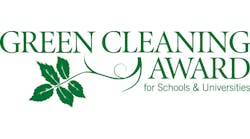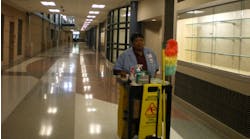The process of continual improvement is important for all activities, including cleaning. But it can be challenging in today’s economy. And it is even harder to assess what’s been accomplished over the past year and then determine what changes should be made going forward. Yet, this is exactly what needs to be done to drive improvements.
Once a mature industry with commodity-type products, the cleaning industry has exploded with innovations that reduce environmental impacts: from greener cleaning chemicals to chemical-free cleaners using ionized, electrolyzed and ozonated water; recycled paper to paper derived from certified forests, rapidly renewable and tree-free fibers; greener equipment with advanced battery technologies to those that clean with only water to those that are quieter and more ergonomic; tools and other materials that are made with recycled content to those more durable and repairable.
Beyond products, the "science" of cleaning has advanced with laboratory equipment adapted to measure cleanliness objectively. Training programs teach custodians to reduce energy and water consumption. These and other innovations can help create more healthful buildings while reducing environmental impacts and cost.
However, without an intentional and well-managed assessment effort, opportunities to improve products, processes, testing and other components of a state-of-the-art green cleaning program could be missed.
One simple and effective assessment tool is the application for the Green Cleaning Award for Schools & Universities sponsored by American School & University, the Healthy Schools Campaign and the Green Cleaning Network. The award process is easy and includes a short description of the history of the program and what it has accomplished. This application process builds collaboration and buy-in, internally determines if progress has been made, and identifies clearly where the program is headed.
Beyond the history, it is important to assess what has taken place over the past school year. This includes:
•Procedures and strategies. This typically includes how disinfectants are used, strategies to encourage handwashing, timing of vacuuming or carpet cleaning, and other topics that focus on health protection.
•Training. This helps assess training for cleaning personnel, who attended, at what frequency and if anything was really accomplished.
•Innovations. This creates the opportunity to identify innovative strategies, products or equipment—or the lack thereof.
•Evaluation methods and results.This typically includes what is measured and how often, including reduced absenteeism, changes in test scores, etc., and what has been documented.
Another important part of an annual assessment is what efforts were made to engage others in the responsibility of green cleaning and maintaining a healthy facility. This assessment can be done by addressing the following topics:
•Policies or processes. This includes policies, training materials and communications pieces.
•Communications/Community engagement. This addresses efforts to engage the community such as meetings, discussions, posters and other efforts explaining the importance of green cleaning and what community members can do to make a difference.
•Recognition.Consideration of other awards and recognition can identify additional improvement opportunities and differing ways to think about and solve problems.
Finally, the annual assessment should evaluate the chemicals, equipment, supplies and other products that are used. This will help identify if purchasing policies are being carried out and opportunities for improvement. This is one area where vendors can help.
Ashkin is executive director of the Green Cleaning Network, a 501(c)3 not-for-profit educational organization.


